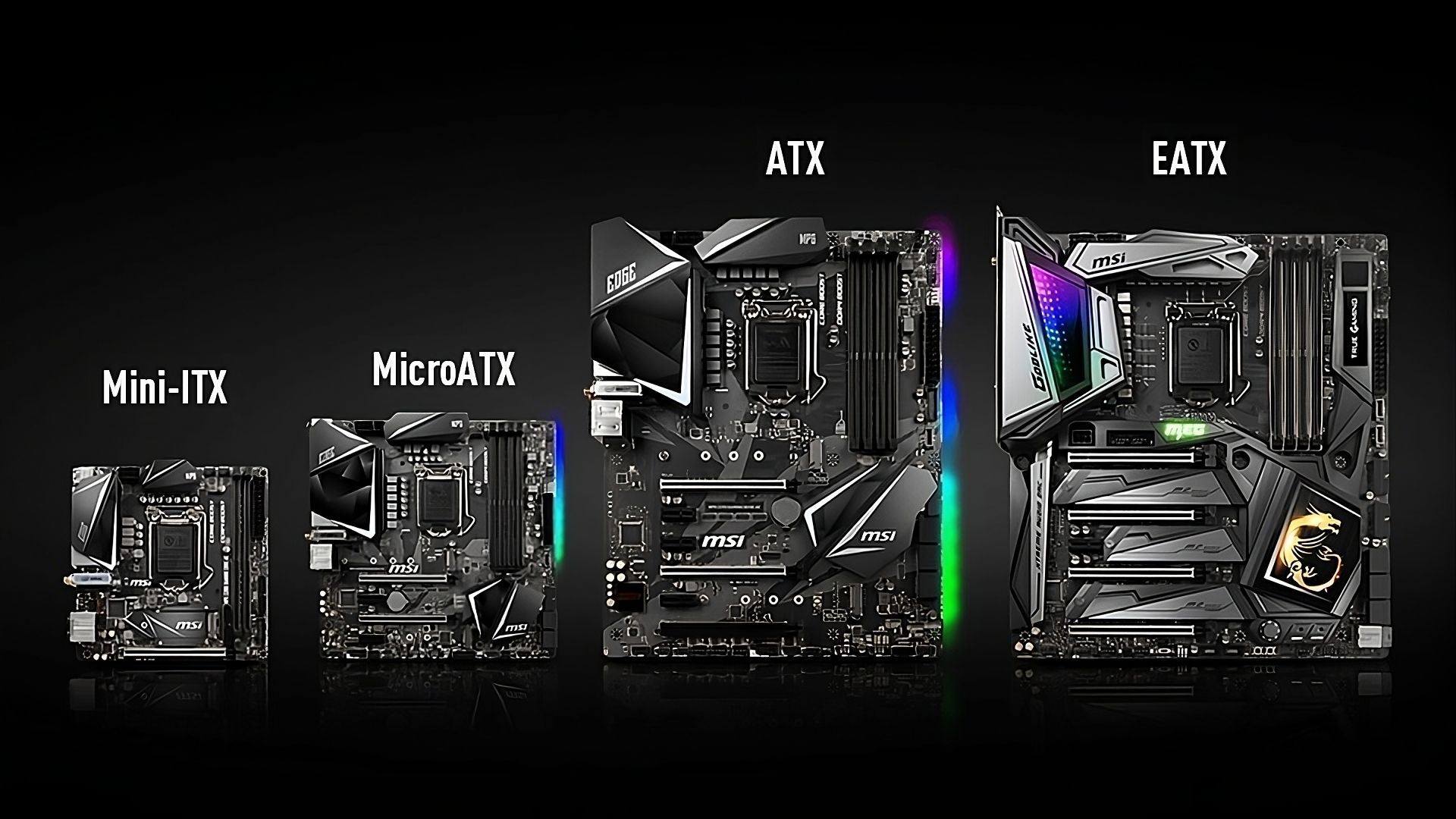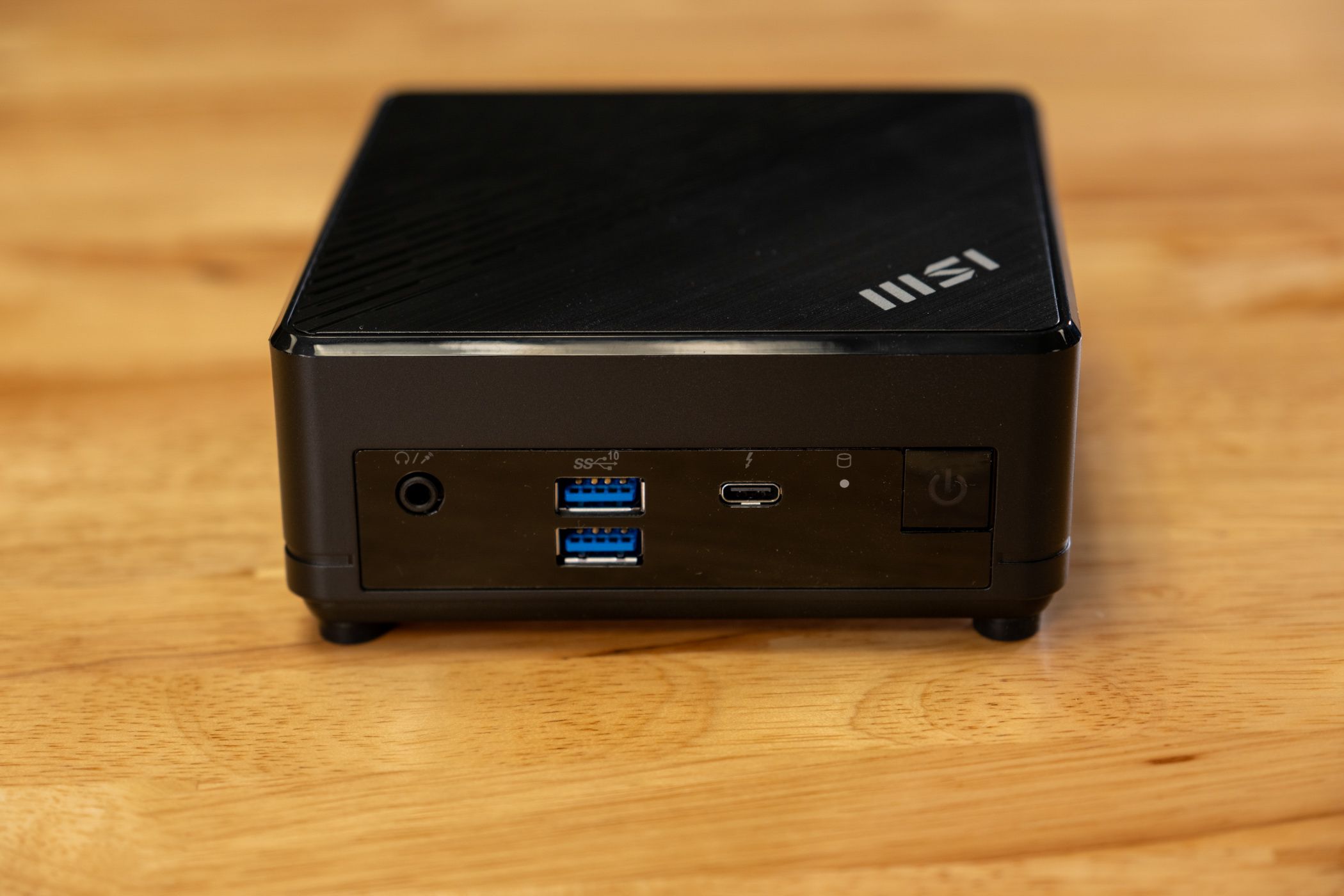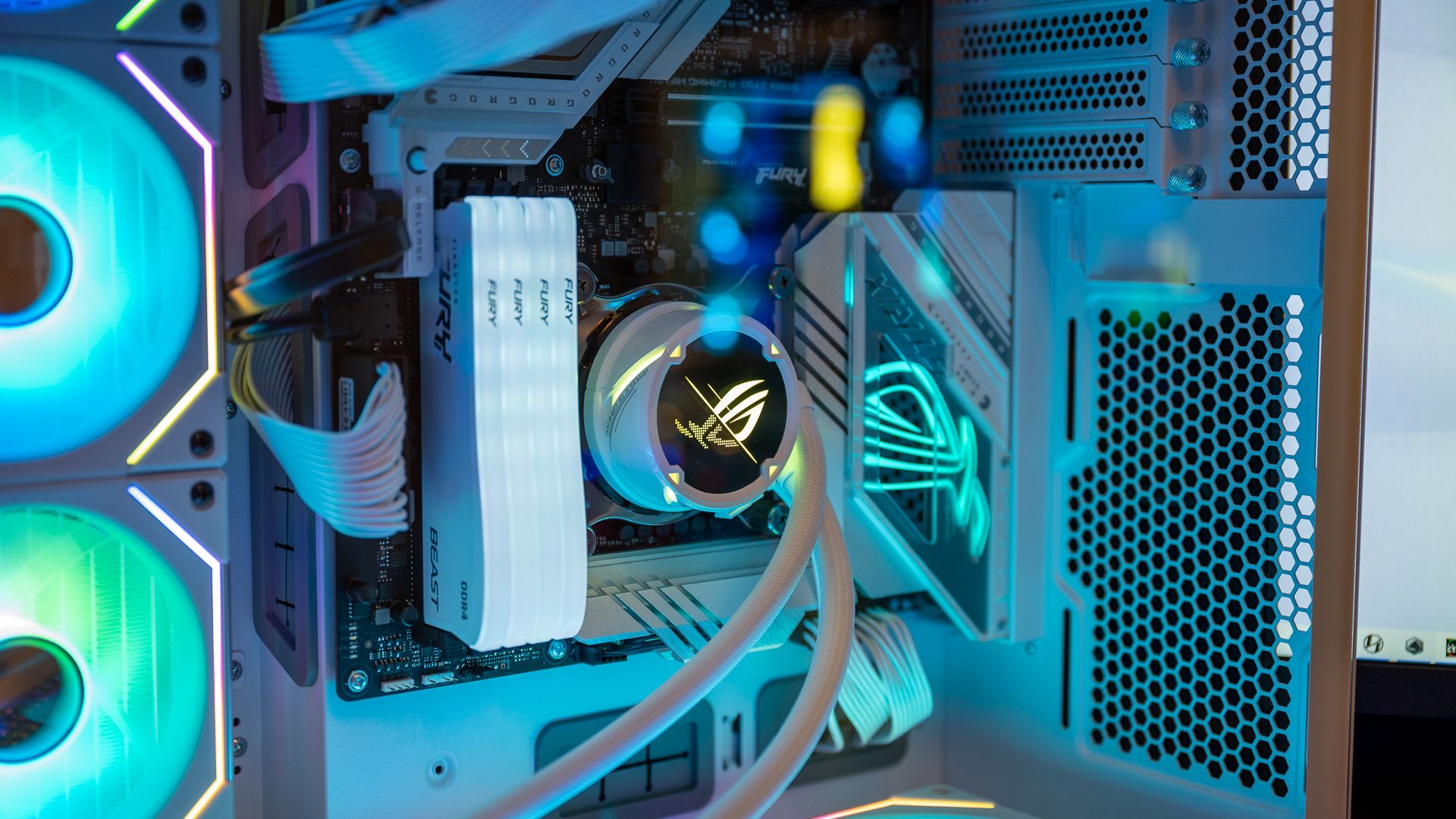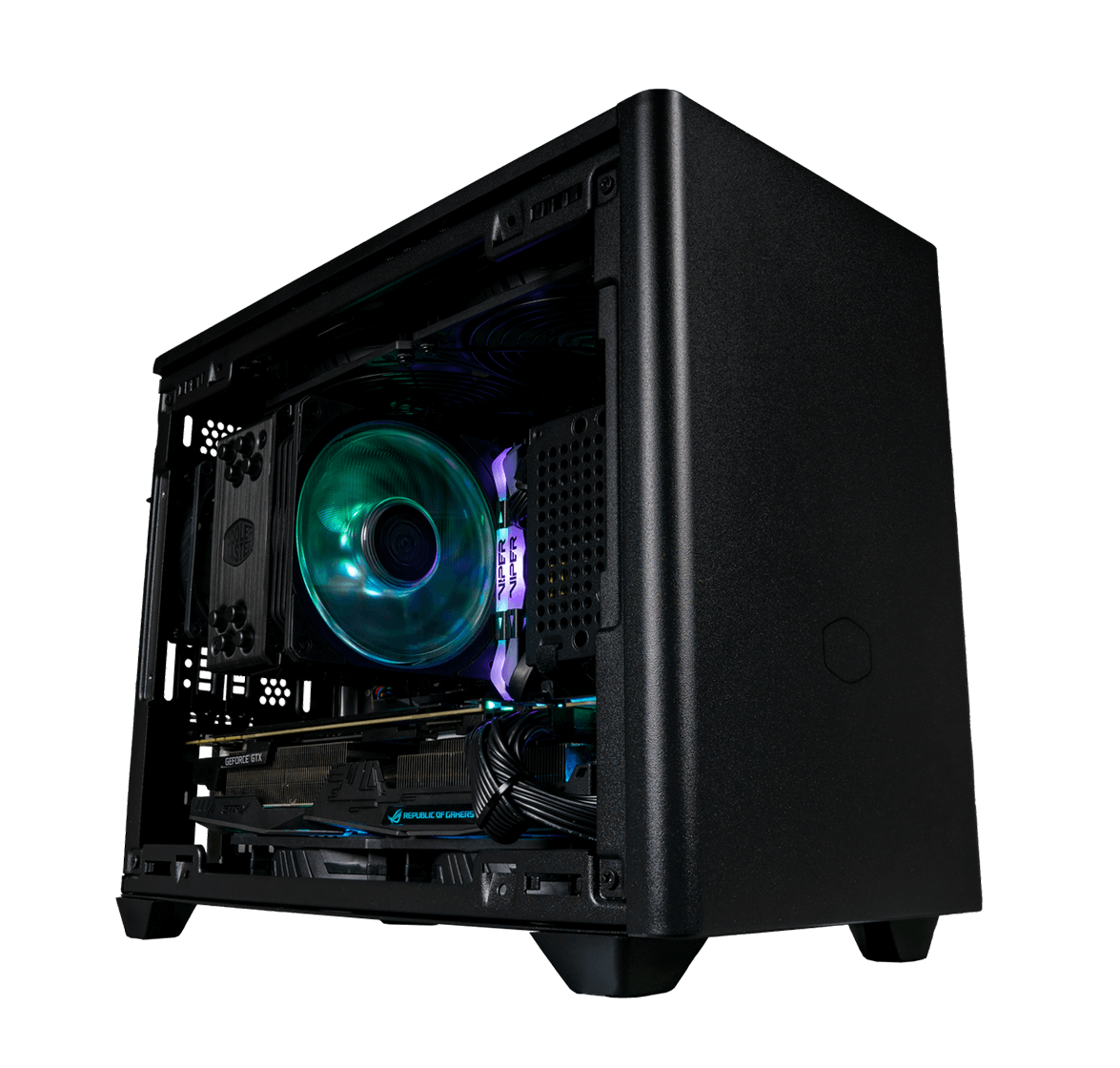
Key Takeaways
- Mini-ITX motherboards are significantly smaller than microATX motherboards, making them ideal for tiny computer builds suitable for travel.
- Mini-ITX motherboards have fewer features and limited expandability compared to microATX motherboards.
- MicroATX motherboards are suitable for budget builds, as they’re cheaper and offer better compatibility with PC parts.
Are you getting tired of your regular-sized case and want a smaller computer? In that case, your choice essentially boils down to Mini-ITX and microATX motherboards and their respective cases. Mini-ITX is the smaller of the two, but how much exactly do you lose?
Size: Mini-ITX Build Is Absolutely Tiny
One of the key reasons people buy a Mini-ITX or microATX over a standard ATX motherboard is size. A Mini-ITX motherboard measures 6.7 by 6.7 inches (17 by 17 cm), while microATX motherboards are 9.6 by 9.6 inches (24.4 by 24.4 cm). If you do the math, you’ll find that microATX motherboards are about 40% larger than Mini-ITX. Still, both are significantly smaller than ATX motherboards, which measure 12 by 9.6 inches (30.5 by 24.4 cm). To put things into perspective, a Mini-ITX motherboard has a smaller footprint than a 10-inch laptop.
This difference in size primarily affects the overall expandability and choice of case. Let’s first talk about cases. We could talk about case dimensions, but because PC cases come in many different shapes, it’s better to look at the volume. We measure PC case volume in liters. Although there aren’t any strictly defined definitions, manufacturers typically put Mini-ITX cases in the 5–12-liter range. Small microATX cases are about 12 to 30 liters.
There’s some overlap between the two standards in the 12–16 liter range, so be sure to check the specs to see what motherboards are supported before ordering a case. Remember, you can always go up in the size of the case but not down.
In real-world scenarios, the difference between a Mini-ITX and a microATX case is not as substantial as you might expect. Neither option will occupy much space on your desk or under your TV. If your goal is to have a small and not the smallest possible computer, microATX will be great. But if a small form factor PC is what you’re after, you can’t go wrong with a Mini-ITX case. If you need the smallest computer possible, you should take mini PCs into consideration too. Some can even fit in the palm of your hand or inner coat pocket.
Performance and Expandability: How Much Do You Lose With Mini-ITX?
This is where the real differences between Mini-ITX and microATX hide. microATX motherboards are essentially a trimmed version of a full-size ATX case. While the exact configuration varies, microATX motherboards typically have fewer PCI and M.2 slots, USB and SATA connectors, fan headers, and a few other minor features. They still retain four RAM slots, although some budget options only have two. All in all, microATX motherboards make sacrifices in all the right places, so you won’t even notice that important features are missing.
Mini-ITX is even smaller than microATX, so it has fewer of everything. Mini-ITX motherboards only have a single PCIe x16 slot for the graphics card, a maximum of two M.2 slots and SATA connectors, fewer USB connectors, and only a couple of fan and RGB headers. But the biggest sacrifice is that Mini-ITX motherboards typically only have two RAM slots. The only exception is motherboards that use SODIMM RAM (which are designed for laptops), like the AsRock X570D4I-2T AM4 Server Motherboard.
If you don’t need a whole lot of storage and don’t care about expansion cards, you could still make Mini-ITX work. I advise you to buy more RAM than you initially planned and to look for a motherboard with built-in Wi-Fi and Bluetooth. Adding those features later will be difficult or impossible. If you’re a gamer, we have recommendations for excellent motherboards for AMD and Intel.
Opting for a higher-tier motherboard will provide you with better features and expandability, regardless of the motherboard form factor.
Cooling is another factor that’s at play with small PCs. Cramming powerful components into a tiny space will result in a lot of heat that has nowhere to go, and you can’t always add more case fans to fix the issue. Some Mini-ITX cases allow for AIO liquid cooling and relatively tall air coolers, but size will always be a limiting factor. microATX cases are larger, which means more fans, larger radiators, and better cooling.
Price: Pay More to Get Less With Mini-ITX
You’d think that Mini-ITX would be cheaper because it’s smaller and has fewer parts. However, Mini-ITX is a niche form factor for small PC builders; it’s not in demand like microATX and ATX. Mini-ITX can’t benefit from economies of scale to scale up production and reduce costs, so you end up paying more and getting less.
On the other hand, microATX is often cheaper than standard ATX motherboards. microATX is a popular form factor that strikes a perfect balance between size and features. Manufacturers need fewer parts to make a microATX motherboard than an ATX one, so the resulting product usually costs less. For example, the Gigabyte B650M Aorus Elite AX motherboard is typically cheaper than the full-size Gigabyte B650 Aorus Elite AX while still retaining all of its core features. Not only are microATX great for small PC builds, but they’re also amazing for budget-conscious buyers who don’t need half a dozen fan headers and expansion slots.
Portability: How Small Do You Need?
We’ve already established that Mini-ITX motherboards allow for significantly smaller PC builds while still allowing for desktop-sized graphics cards. Although Mini-ITX isn’t as portable as a gaming laptop, it can give you significantly better performance for your money. A Mini-ITX PC with a handle—like the KXRORS S300—is perfect if you frequently travel between two destinations that have displays you can plug into.
If you don’t travel often or only have to move your PC occasionally, a small microATX case offers more value without a significant compromise in space and portability. microATX cases can easily fit inside car trunks without taking up that much space.
Build Difficulty: Mini-ITX Is Finicky
The number one complaint you’ll hear from Mini-ITX owners isn’t overheating—it’s build difficulty. Cable routing is a nightmare, and good luck trying to fit more than one SSD or HDD. The motherboard is pretty much the only thing guaranteed to fit. Everything else is incredibly difficult to cram in, especially if it’s a full-sized component. To make things easier, opt for a small form factor power supply and graphics card and a low-profile CPU cooler.
microATX doesn’t suffer from this problem as much, but smaller cases still pose a challenge. You’ll have more room for cables, storage, fans, and long graphics cards. You’ll have more options for PC parts, so you can better tailor the PC to meet your needs and budget.
Choose a Case Before You Build the PC
While you could pick a graphics card or motherboard and go from there, your case will be the piece that makes or breaks the whole small PC build. Mini-ITX and microATX are universal standards, and while there are some tiny differences in their dimensions, you shouldn’t have any trouble fitting a motherboard with a well-designed case.
To get you started, take a look at our roundups of the best Mini-ITX and microATX cases and pick one that aligns with your needs and fits your budget. Look for something that makes smart use of the limited space available, has plenty of airflow, and can fit full-size components. Unless you absolutely need a tiny Mini-ITX computer, I recommend going for a small microATX case because you’ll get more of everything at a potentially lower cost.










